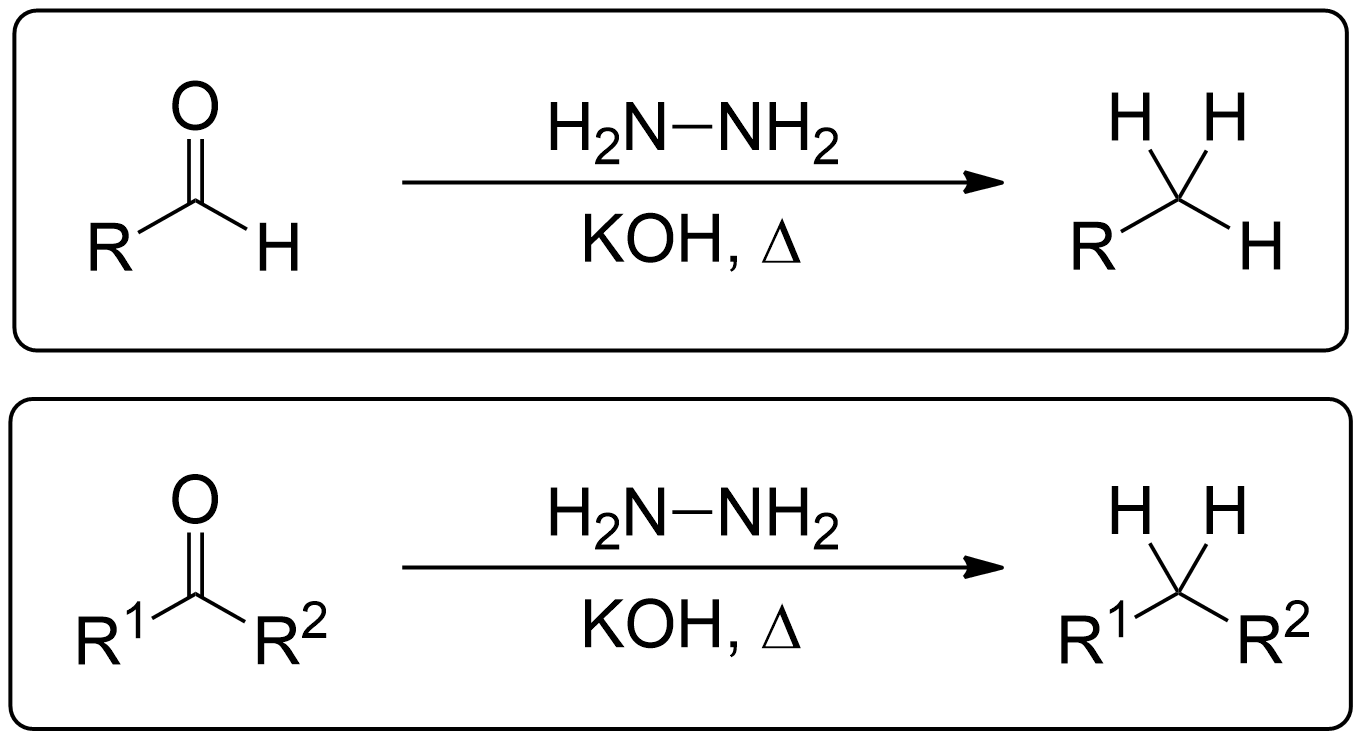

Predicting the Product
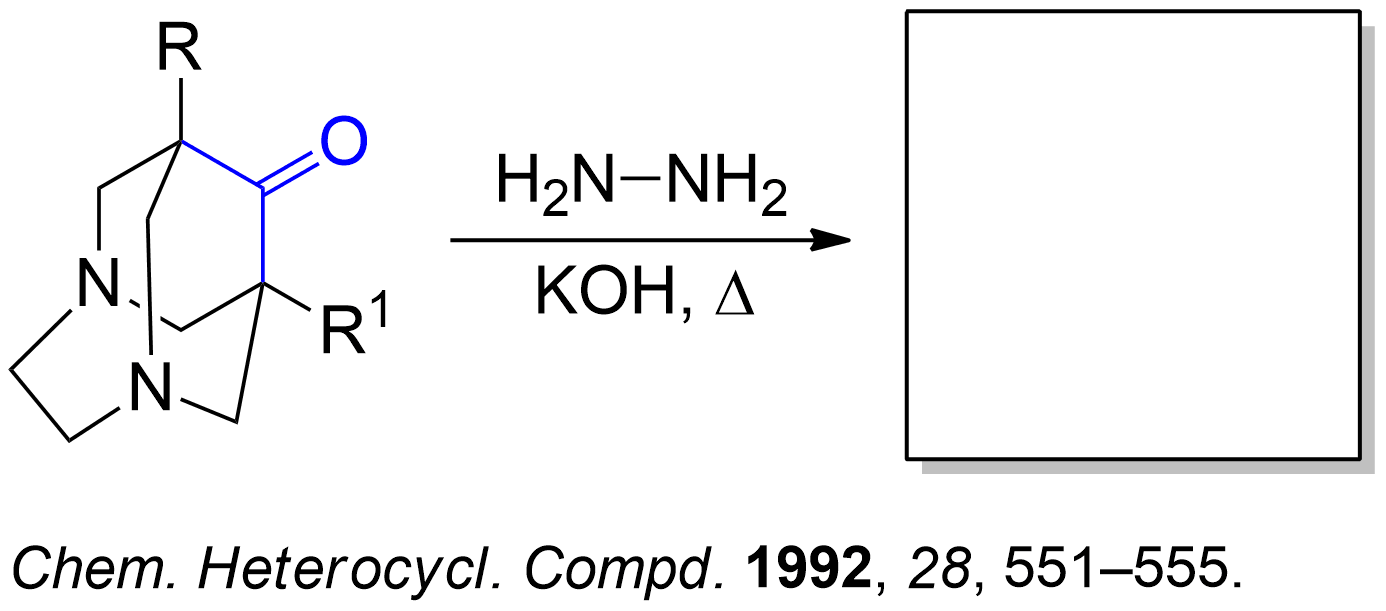

Where is this Reaction from?
Where is this Reaction from?
Reduction of 3,6-diazahomoadamantan-9-ones (Ia–g) as described by Kuznetsov et al.
Depending on the pathway, the methylene product or azine product is formed.
How is this Reaction used in the paper?
How is this Reaction used in the paper?
Schematic representation of the Wolff–Kishner reduction of 3,6-diazahomoadamantan-9-ones (Ia–g) as described by Kuznetsov et al.
This reaction yielded 3,6-diazahomoadamantanes (IIIb–e, g) from substituted ketones, while the unsubstituted analog (IIa) formed azine dimer IVa upon thermal decomposition.
Mechanism for Carbonyls
This section is a brief overview on how to perform the mechanism for both aldehydes and ketones using the paper from above.
 We know the scheme for this reaction and the product. Lets do the mechanism now.
We know the scheme for this reaction and the product. Lets do the mechanism now.
Ketone to Hydrazone Conversion
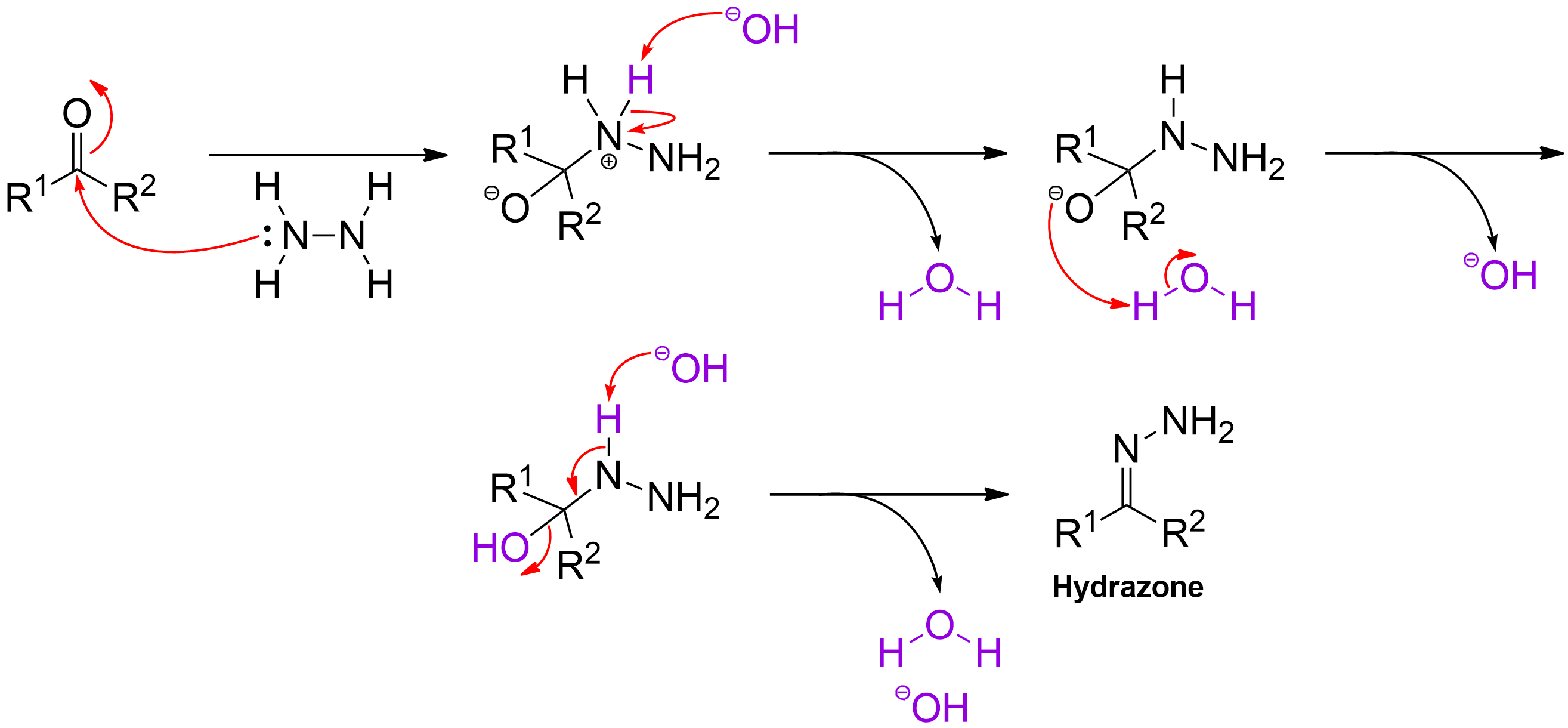
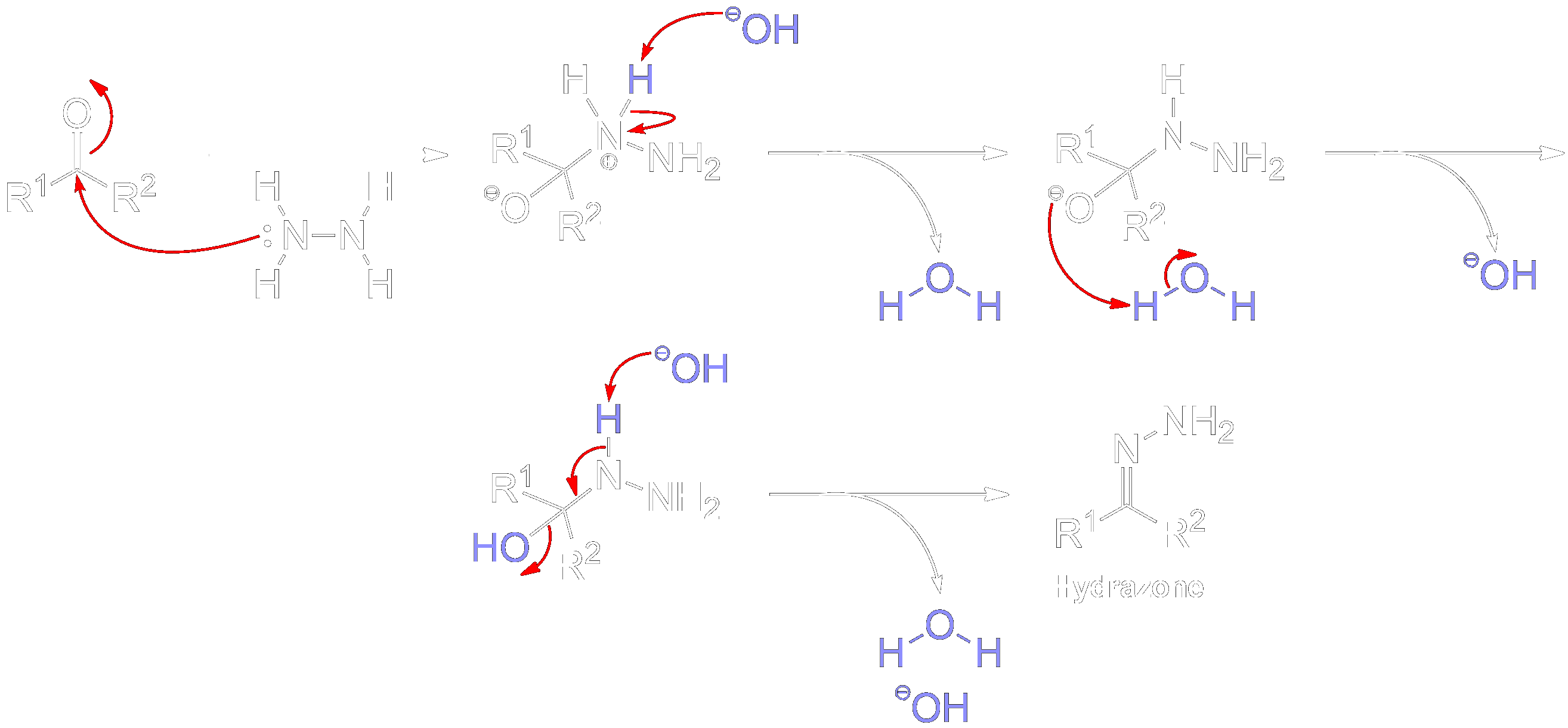
- Hydrazine’s terminal nitrogen attacks the carbonyl carbon, forming a tetrahedral intermediate.
- A proton shifts from the N–H⁺ to the alkoxide, yielding a neutral alcohol.
- Base deprotonates the hydroxyl group, facilitating loss of water and forming the C=N double bond.
- Hydrazone is formed. (C=NNH₂).
How far have we progressed through the scheme?
How far have we progressed through the scheme?

 We are now half-way through with the mechanism and scheme.
We are now half-way through with the mechanism and scheme.Hydrazone to Methylene Product
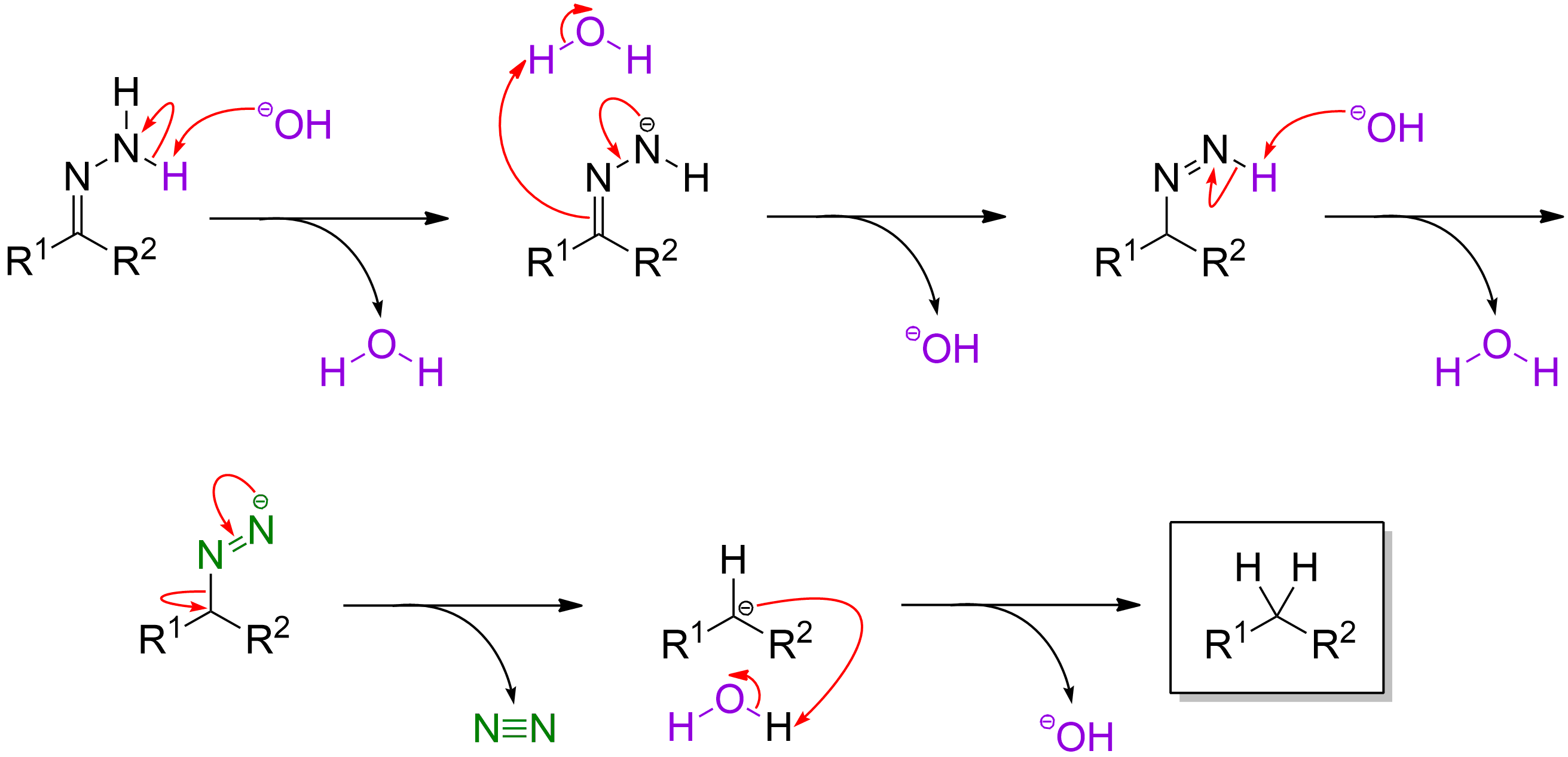
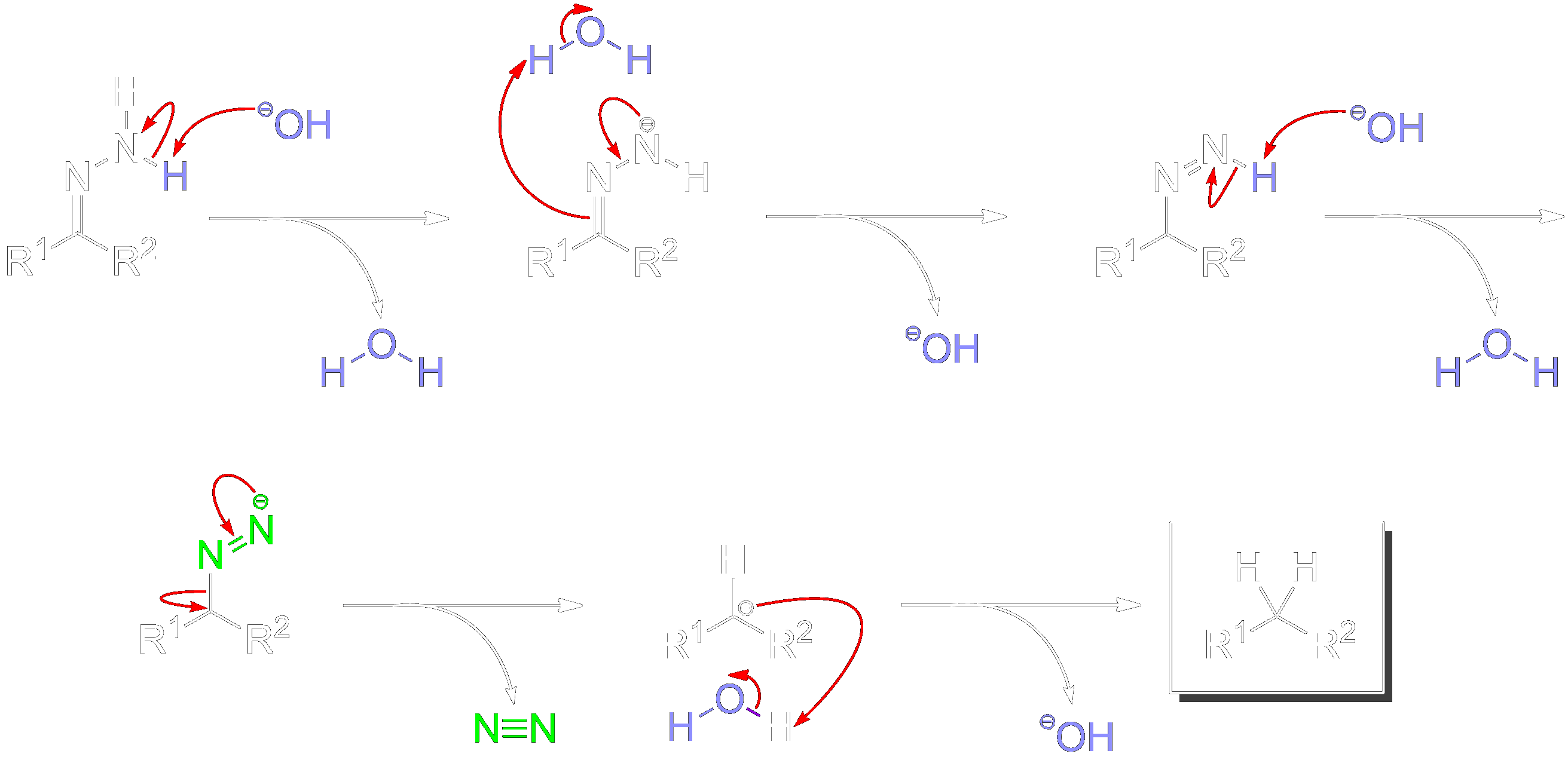 The Hydrazone is deprotonated by hydroxide and reprotonated by water. Eventually, this leads to removal of a N2 group. Lastly, a final protonation by water yields the Methylene (alkane) product.
The Hydrazone is deprotonated by hydroxide and reprotonated by water. Eventually, this leads to removal of a N2 group. Lastly, a final protonation by water yields the Methylene (alkane) product.Summary
The reaction entry summary. Find the general scheme and full summarized mechanisms here.General Scheme
This section briefly summarizes what can and cannot undergo reactions.

- Wolff-Kishner uses Hydrazine (H₂N–NH₂), a strong base (KOH or KOtBu), and heat
- Carbonyls are converted into a methylene (–CH₂) group (alkane)
- All reactions, follow a general scheme:


General Mechanism
This section briefly summarizes steps to find the product and perform the mechanisms. Quick steps to finding the product for any carbonyl- Identify the reagents.
- Identify the target carbonyl to be reduced.
- Selectively convert the carbonyl, keep the rest of molecule the same.
- Always remember the general scheme.
Full Ketone/Aldehyde to Methylene (Alkane) Mechanism
Full Ketone/Aldehyde to Methylene (Alkane) Mechanism

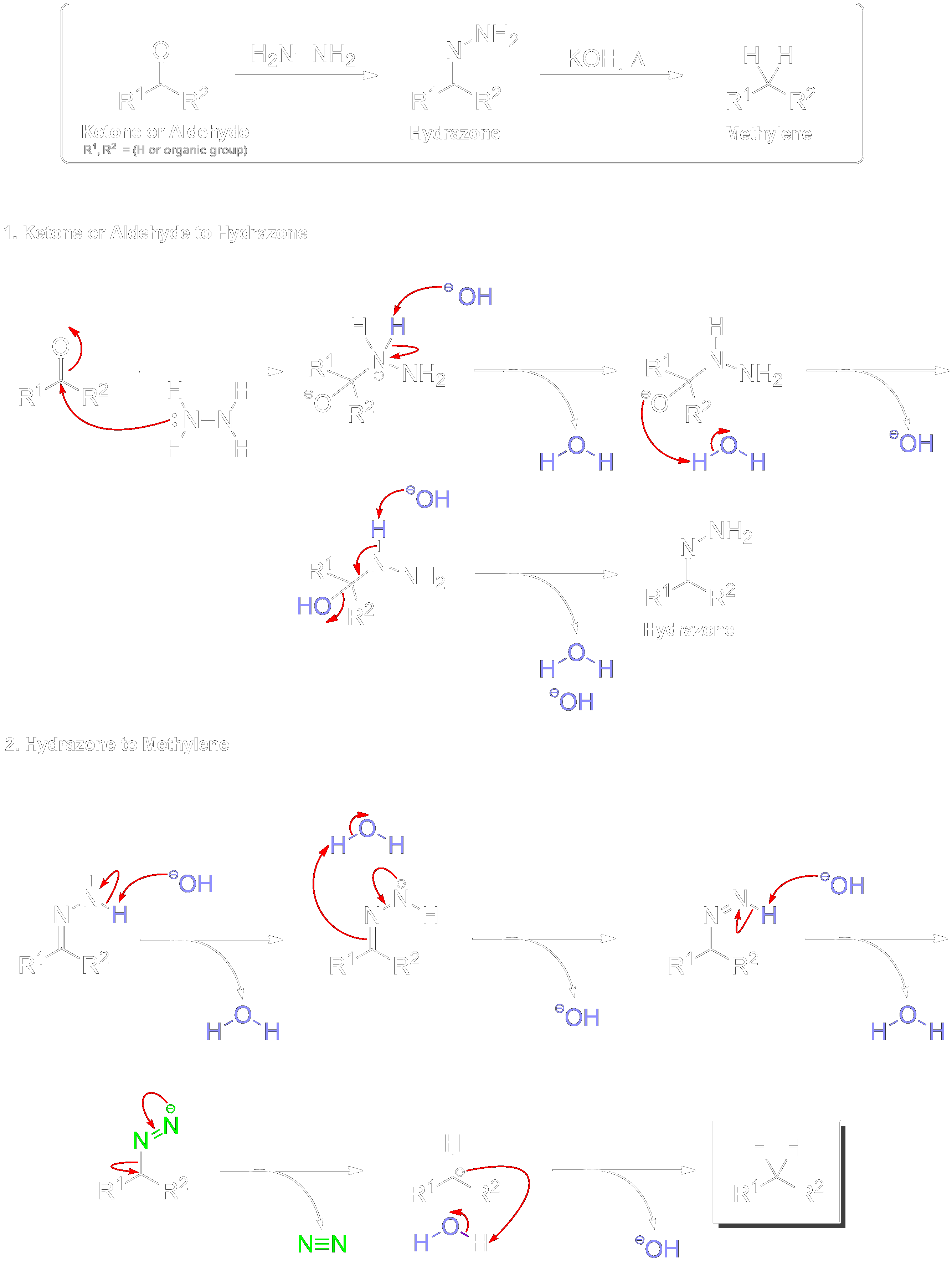
References
[1] Kishner, N. Wolff–Kishner reduction; Huang–Minlon modification. J. Russ. Phys. Chem. Soc. 1911, 43, 582–595. ↩
[2] Wolff, L. Chemischen Institut der Universität Jena: Methode zum Ersatz des Sauerstoffatoms der Ketone und Aldehyde durch Wasserstoff. [Erste Abhandlung]. Justus Liebigs Ann. Chem. 1912, 394, 86–108. https://doi.org/10.1002/jlac.19123940107 ↩
[3] Clayden, J.; Greeves, N.; Warren, S. Organic Chemistry, 2nd ed.; Oxford University Press: Oxford, 2012. ↩
[4] Verma, D. K.; Dewangan, Y.; Verma, C. Reactions of Aldehydes and Ketones. In Handbook of Organic Name Reactions; Verma, D. K., Dewangan, Y., Verma, C., Eds.; Elsevier: 2023; pp 155–241. ↩


[5] Kuznetsov, A. I.; Vladimirova, I. A.; Serova, T. M.; Moskovkin, A. S. Heteroadamantanes and Their Derivatives. 17. Wolff–Kishner Reduction of 3,6-Diazahomoadamantan-9-ones. Chem. Heterocycl. Compd. 1992, 28, 551–555. https://doi.org/10.1007/BF00475255 ↩















